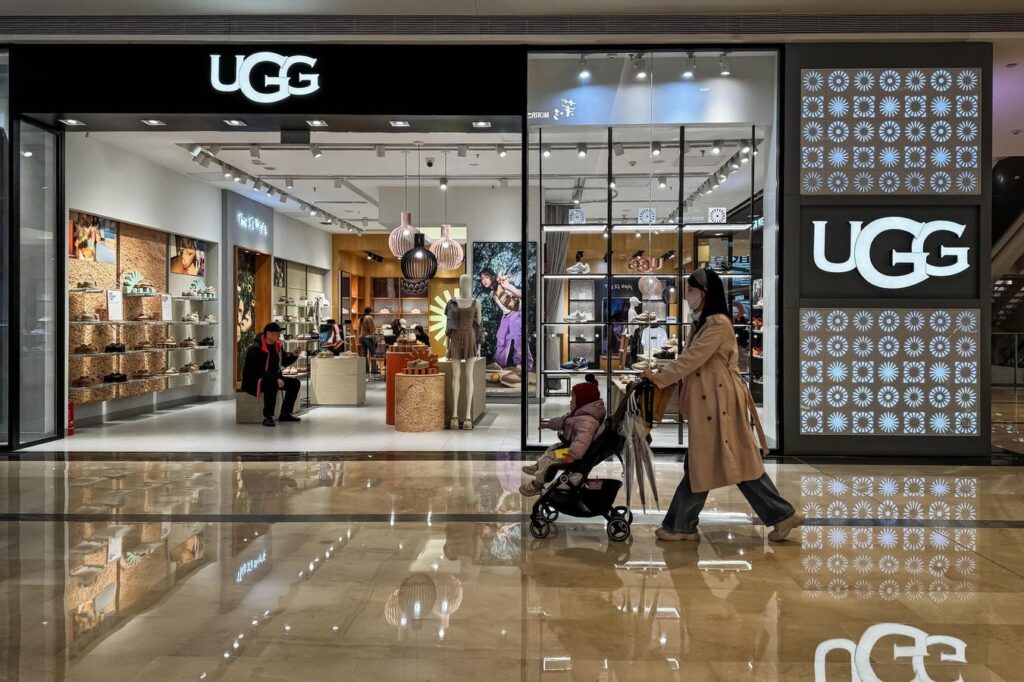Deckers Outdoor (NYSE: DECK) has encountered considerable challenges lately, with its stock plunging 50% this year. While this drop may concern investors, historical patterns suggest such volatility isn’t out of the ordinary for the footwear leader. Previous market downturns show that DECK has been through similar rough patches before.
During the inflation spike in 2022, Deckers’ stock dropped by 48%. In 2020, during the height of pandemic uncertainty, it fell 55%. The most severe decline occurred during the 2008-2009 financial crisis, when DECK lost 77% of its value. For investors seeking a potentially more consistent and outperforming investment, consider the Trefis High Quality portfolio. This strategy has delivered over 75% returns since inception, as shown by its HQ performance metrics.
Deckers’ Core Strengths Are Still Strong
Despite current negative market sentiment, Deckers’ business fundamentals remain solid:
- The company owns two standout brands: UGG and HOKA
- UGG continues to lead the premium comfort footwear space with its well-known sheepskin boots and broadened lifestyle range
- HOKA has grown into a top-tier performance running brand with a devoted following among both athletes and casual users
- Deckers Outdoor’s Revenues have seen significant growth over the years.
- Its revenue rose at an average annual rate of 18.3% over the last three years
- Revenue increased by 19.5%, from $4.1 billion to $4.9 billion in the past 12 months
- Quarterly revenue grew 17.1%, reaching $1.8 billion in the latest quarter from $1.6 billion a year earlier
- Deckers Outdoor’s profit margins are among the highest in the Trefis coverage group.
- Deckers Outdoor’s Operating Cash Flow was $1.1 billion during the same period, indicating a high OCF-to-Sales Ratio of 22.1%
- The company’s balance sheet remains exceptionally strong.
- Deckers’ total debt stood at $257 million at the end of the latest quarter, while its market cap was $16 billion (as of 4/7/2025), resulting in a very low Debt-to-Equity Ratio of 1.5%. [Note: Lower ratios are preferred]
- The company held $2.2 billion in cash and equivalents out of $4.0 billion in total assets, leading to a strong Cash-to-Assets Ratio of 56.5%
The Value Case
Currently, DECK stock trades at 3.3x trailing revenue, close to the S&P 500 average of 3.2x and below its own 3-year average P/S ratio of 3.8x. From a valuation angle, a $15 billion company generating $1 billion in free cash flow implies a 6% yield – notably better than typical bank savings rates. Combined with nearly 20% annual growth, the long-term investment potential becomes even more appealing.
Handling Market Volatility
Deckers has survived significant downturns in the past and come out stronger. Although short-term uncertainty persists, the company’s powerful brands and solid financials create a firm base for a potential rebound once sentiment shifts.
Markets can remain irrational for long periods, especially during times of heightened fear. For long-term investors with the ability to stay the course, this DECK selloff could be an opportunity. Those averse to volatility may want to explore a more hedged strategy or diversify with a broader portfolio such as the Trefis Reinforced Value Portfolio, which has outperformed its all-cap benchmark (comprising the S&P 500, S&P MidCap, and Russell 2000 indices). Alternatively, working with a financial advisor experienced in bear markets may help. Wealth is often built by those who stay calm and strategic amid market turbulence.
Invest with Trefis
Market Beating Portfolios | Rules-Based Wealth
Read the full article here

